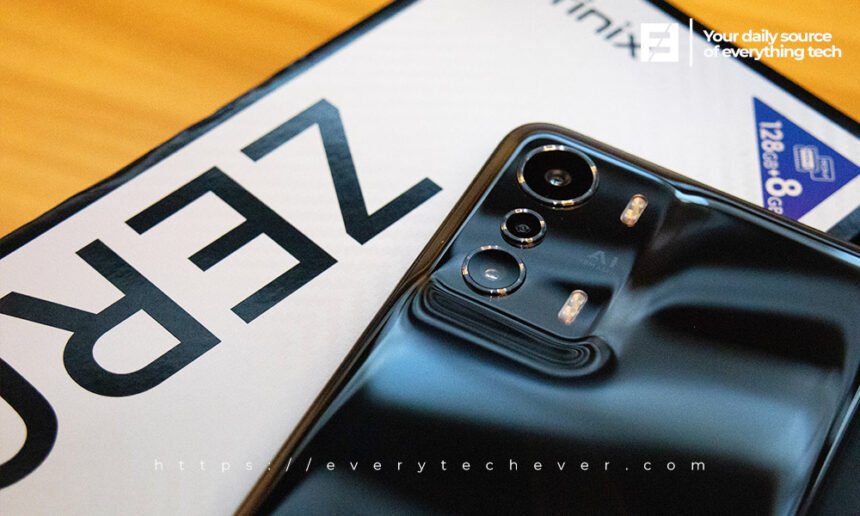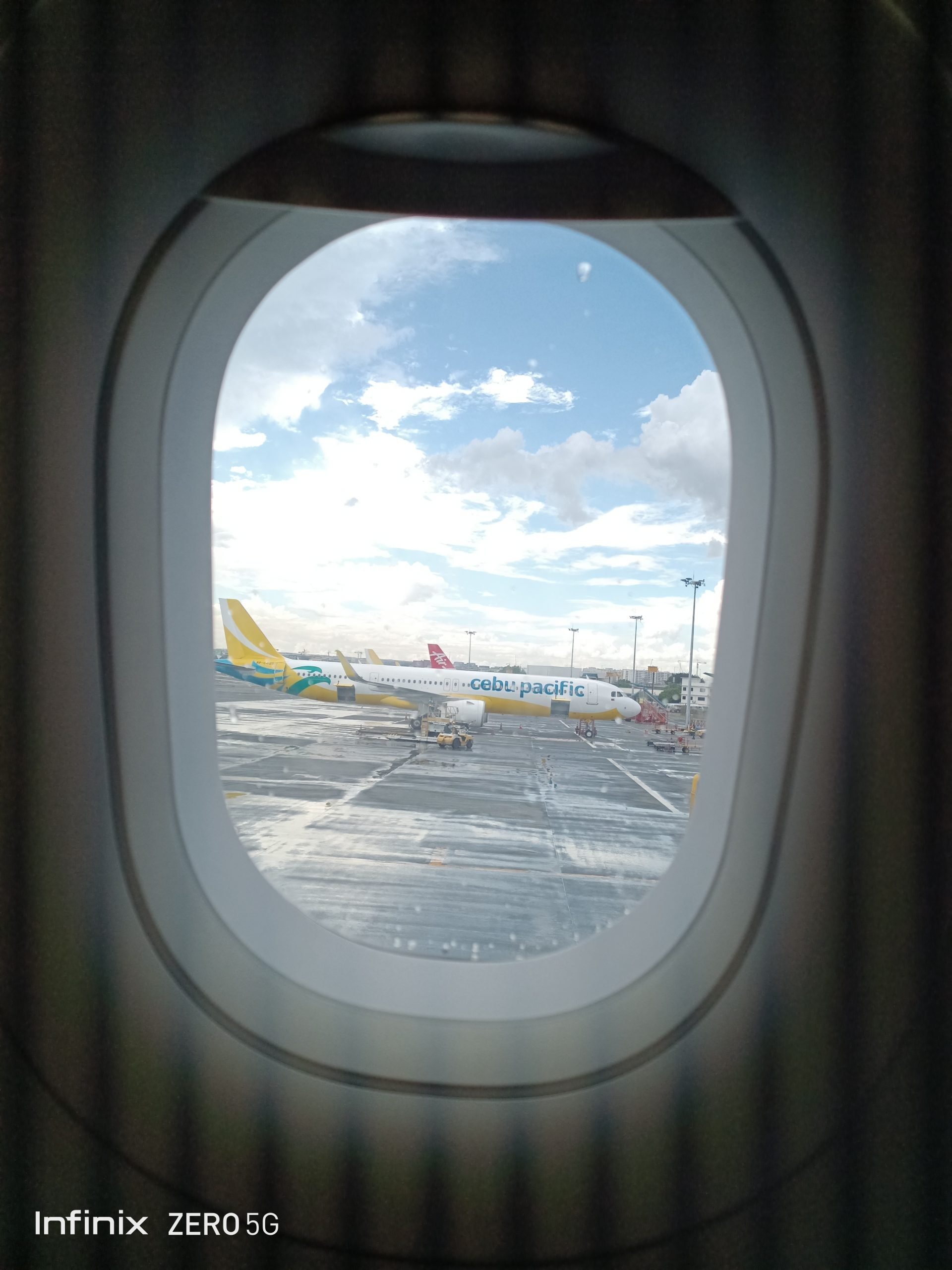The Infinix brand is owned by Transsion Holdings, which has been creating dozens of new low-cost smartphones with tons of features. The Infinix ZERO 5G is the company’s first 5G phone, and it’s very stunning, to say the least. Thanks to the competitive pricing and 5G connectivity which is still rare at this price point.
The MediaTek Dimensity 900 is a significant step forward for the company, which had relied heavily on MediaTek G processors. Infinix opted for fast UFS 3.1 storage and LPDDR5X RAM to complement it, boosting its capabilities. Is there anything else it has to offer? Let’s see what this review reveals.
What’s inside the box?
The Infinix ZERO 5G comes with a USB-C type cable and a power brick out of the box. Because of the way it was designed, the packaging had a really distinct look and made quite a statement.
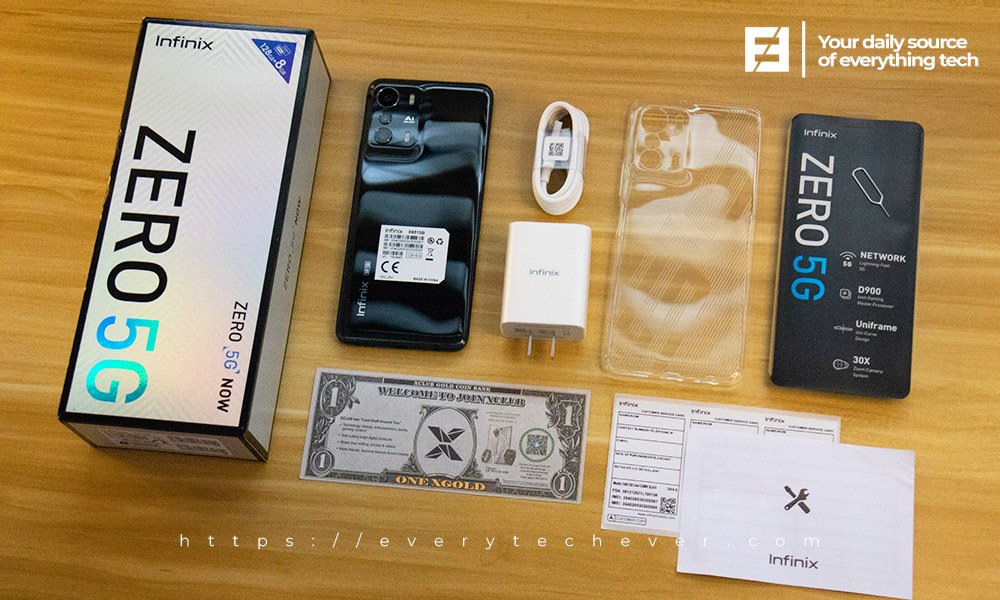
The 33W charger is coupled with a short yet durable USB Type-A to Type-C cable. There’s also a transparent TPU case with a nice grip, perfect for clumsy hands. The company has generously added a pair of wired headphones with an inbuilt microphone as well.
Build and Design
Cosmic Black, Horizon Blue, and Skylight Orange are the three color options for the Infinix Zero 5G. We received the black version for review, which has a really shiny feel to it — we like it because it gives it a luxury vibe. However, because it attracts fingerprints, the complimentary transparent case is ideal.
The Infinix Zero 5G feels solid, despite its massive 168.73 x 76.53 x 8.77mm body and 199g weight.
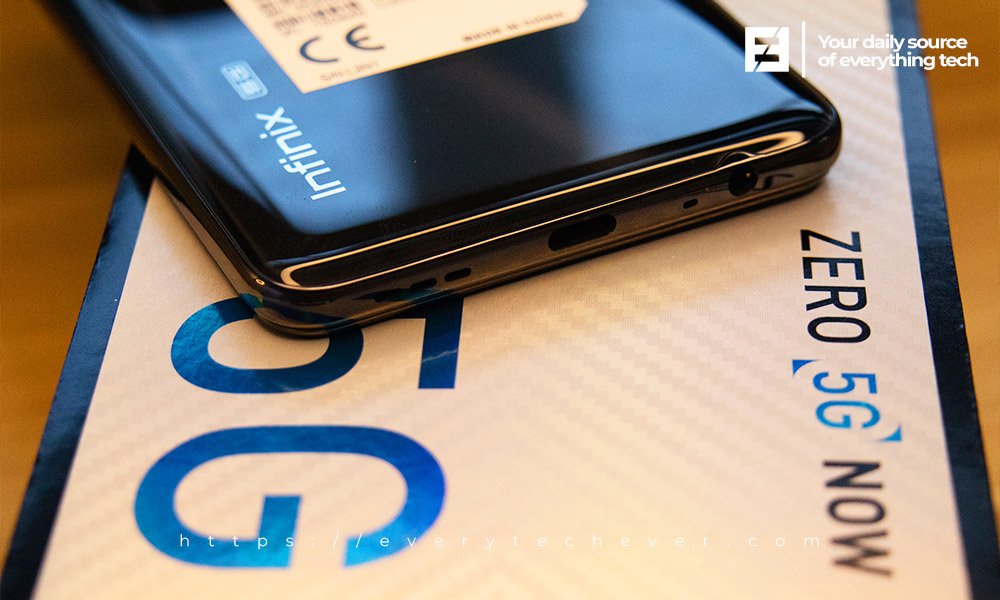
The Infinix Zero 5G features a unique aesthetic, particularly around the camera area. The way the back surface twists and slopes onto the camera assembly reminds me of the Oppo Find X3. Due to its plastic design, Infinix was unable to match the build quality of the substantially more expensive Oppo Find X3.
Because the Zero 5G is a low-cost device, its body is made of plastic. Infinix describes it as a composite material that resembles the look and feel of glass to create an attractive smartphone that feels premium to the touch. As a budget phone, neither an ingress protection rating nor a Gorilla Glass in front of the display are available. But the phone is otherwise solid and stylish.
Display
This phone has a 6.78-inch Low-Temperature Polysilicon (LTPS) panel and FullHD (1080 x 2460 pixels) native resolution. Interestingly, it offers a maximum refresh rate of 120 Hz and touch sampling at 240 Hz, which you would normally see on flagship devices.
Infinix ZERO 5G is allowing users to stick to the Auto-Refresh option, which determines the refresh rate automatically. This also improves battery life, and it’s great to see that a budget phone offers this handy feature.
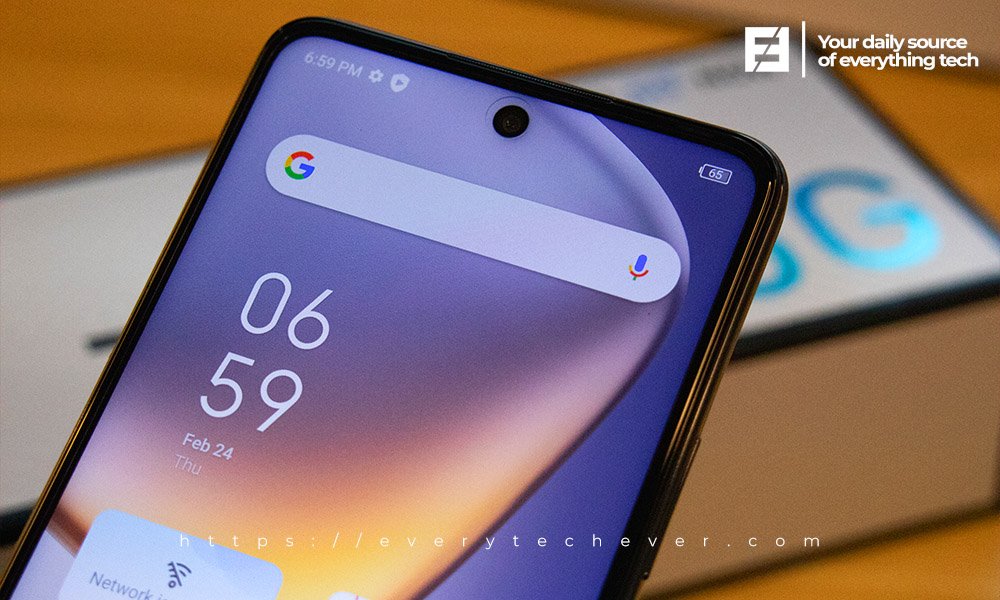
Overall, Infinix’s high refresh rate means handling is good but not ideal. Some additional work is needed to improve the auto mode, which can be done through software updates.
When watching Netflix episodes like The Bridgerton or Dynasty indoors, we found the screen to be more than adequate. In direct sunlight, the display’s visibility is limited by its panel’s maximum brightness of 499 nits. However, is not as good as one might expect at this price point.
On the Infinix Zero 5G screen, color reproduction is all over the place. However, the XOS software has no color profiles or customizations.
Connectivity
Infinix places a strong emphasis on connectivity and has made 5G within everyone’s reach. Its 5G modem supports 13 bands, including n38, n40, n41, n77, n78, n79 Sub6 TDD, and n1, n3, n5, n7, n8, n20, and n28 Sub6 FDD. Apart from that, this phone features a Dual-SIM and True Dual 5G SIM standby, as well as VoNR, which are supported by the MediaTek Dimensity 900 5G chipset. Other connectivity features are FM radio receiver and OTG support, but there’s no NFC.
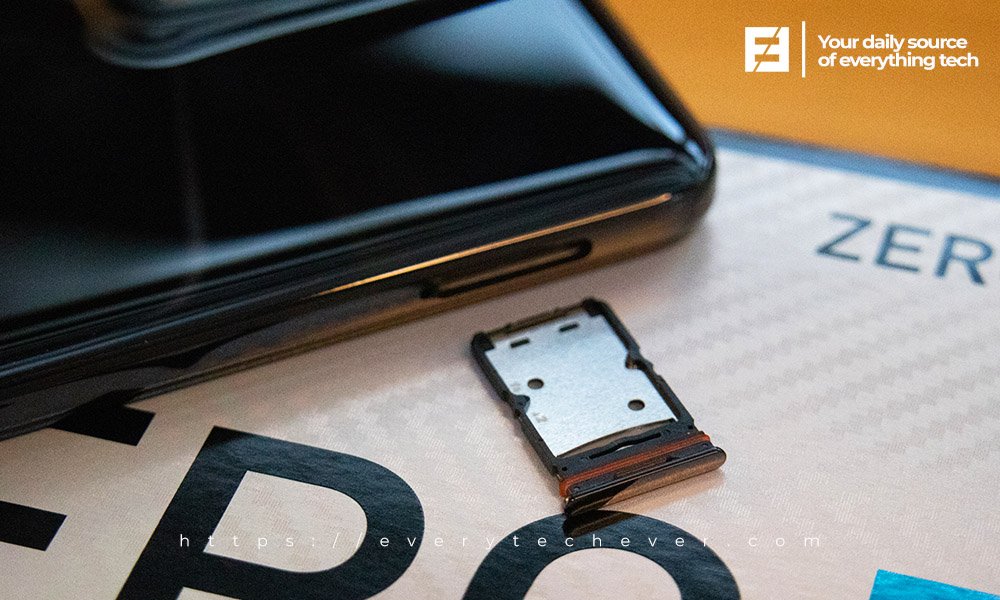
Performance and Benchmarks
Made for mid-range gaming!
The Infinix ZERO 5G is equipped with a MediaTek Dimensity 900 chipset, 8GB of RAM (which can be expanded up to 3GB), and 128GB of internal storage. We are impressed by its performance it should be sufficient as a daily driver. Flipping between apps or browsing social media was effortless.
The Dimensity 900 contains two Cortex-A78 big cores clocked at up to 2.4GHz, which is significantly faster than the MediaTek Dimensity G96 or G95. It is also paired with 8GB of LPDDR5 RAM and 128GB of fast UFS 3.1 storage. These subtleties count, especially when it comes to overall performance.
The display is extremely snappy thanks to the 120 Hz refresh rate and 240 Hz touch sampling rate. This is most obvious when playing mobile games. Also consider the lack of Widevine L1 certification, which will limit most OTT video resolutions to 480p. While this may not be a deal-breaker for most people, it is worth noting.
In terms of gaming experience, Infinix is promoting an enhanced cooling technology known as the “Heat Pipe Thermal Module 2.0 & 3-D Cooling Master.” It’s a heat management system that keeps the Zero 5G cool to the touch even when subjected to intense and sustained loads.
The GPU performance of the Infinix Zero 5G is similarly tough, outperforming Helio G96, Dimensity 810, and Snapdragon 695 5G-powered competitors.
When we tried playing some highly demanding games at high settings, such as Call of Duty Mobile and Genshin Impact, no frame drops or heating issues occurred.
For your comfort, we’ve conducted some tests to measure its synthetic performance. AnTuTu Benchmark gives the Infinix ZERO 5G a score of 477454, PCMark Work 3.0 is 13367, and Geekbench 5 gives it a score of 700 (single-core) and 2173 (multi-core). To be honest, this device outperformed the Huawei nova 9 SE, which has the Snapdragon 680 processor.



OSX 10
We admire how Infinix tries to set itself apart from the competition by developing its own user interface software on top of Android 11. The XOS 10 version is the one that runs on the Infinix ZERO 5G.
A pre-installed theme store and several UI adjustments allow you to customize your home screen, which isn’t uncommon at this price point.
The split notification shade, which pulls your notifications down from the top left and control center widgets down from the top right, is also noteworthy. Xiaomi’s MIUI or Huawei’s HarmonyOS do something similar with a little more flair.
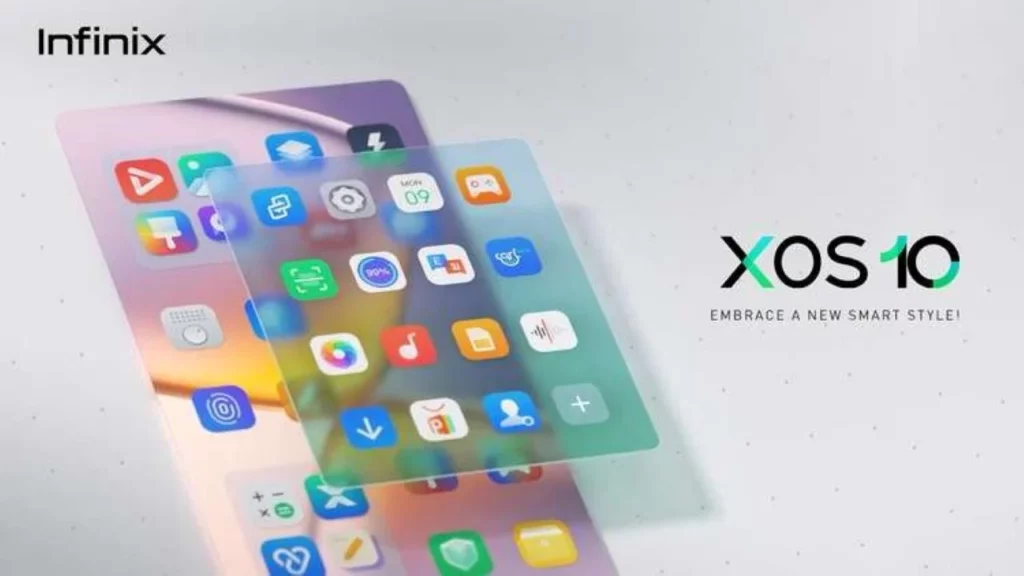
Game optimization is another prominent XOS 10 innovation, or rather a group of functions, named Monster Game Kit. Infinix includes built-in Dar-Link 2.0 software that offers AI-driven gaming optimization, such as frame rate stability, reduced touch latency, and hardware performance and temperature management. There’s a system-wide Game Mode toggle, as well as a Game Mode settings menu where you can change the entirety of the functionality.
The XArena software is a typical game launcher with a few extra features, such as notification blocking. You receive an in-game toolbar with tons of helpful shortcuts, including floating app support, whenever you add a program to XArena and launch it from there.
Bloatware exists, including a number of its own apps as well as third-party apps, many of which have duplicate uses. Though the user interface is unpolished and uninspiring, it has potential that can be enhanced over time.
The essential point is that, despite the surge of bloatware, XOS 10 runs smoothly, with no glitches or stutters. So far, Infinix has looked impressive in this aspect.
Battery
The 5000mAh battery of the Infinix Zero 5G is quite substantial. That’s a lot of space, but it’s also becoming more common for a phone in this price range.
It lasts for a full day of moderate to heavy use, and under ideal conditions, it could possibly last two days. It, on the other hand, does not hold up well to heavy use. One thing is for sure, the 5000 mAh battery will keep you going all day. If you run out of juice, owing to its 33W quick charging solution, you can easily recharge it in about 1.5 hours.


The Infinix Zero 5G got only 8 hours and 12 minutes in the PCMark Work 3.0 battery test that we put all of our phones through, which mimics hard mixed-use. In comparison to other pricey phones, we still think this is a good performance.
Camera
The back of the Infinix Zero 5G features an intriguing triple camera configuration. These days, a dedicated 2x telephoto snapper on a cheap handset is rare. Infinix chose this option over ultrawide, which is the considerably more popular option.
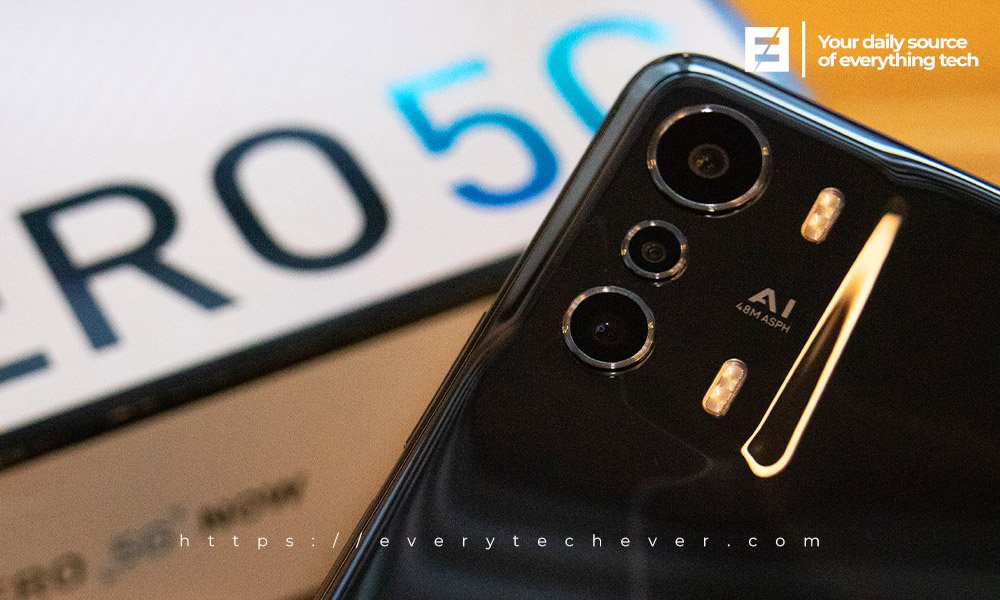
A 48MP primary sensor, a 13MP secondary telephoto lens with 2X optical zoom, and a 2MP tertiary depth sensor are found at the back. The main sensor uses the Samsung ISOCELL Plus S5KGM1. It measures a 1/2.0 “sensor with PDAF and 0.8m pixels. and the dedicated telephoto camera is a 13MP 50mm device with PDAF and a 1/3.1” Samsung ISOCELL S5K3L6 sensor.
In terms of performance, the main camera takes good pictures in bright light with clear details. The auto HDR feature enhances the overall picture quality, and it performs well. However, the shutter speed really isn’t very fast, and there may be some shakes if your hands are not particularly stable.
The telephoto lens provided good results in bright sunlight, but the phone could not keep up in low light situations.
To put the Infinix ZERRO 5G’s camera to the test, we took it to Boracay Island. Here are some of the photos for your pleasure.
Overall, the camera’s performance could have been better, but it’s good enough for social media use.
Infinix has also introduced a selfie LED flash on the Zero 5G’s 16MP front camera, which helps with images in low-light situations. The selfie camera performs decently, but nothing stands out. Although we find the skin tones are not overly processed, which is a plus.
The phone can also record up to 4k videos at 30fps and 1080p at 30/60fps using the front camera.
Overall, the camera’s performance could have been better, but it’s good enough for social media use.
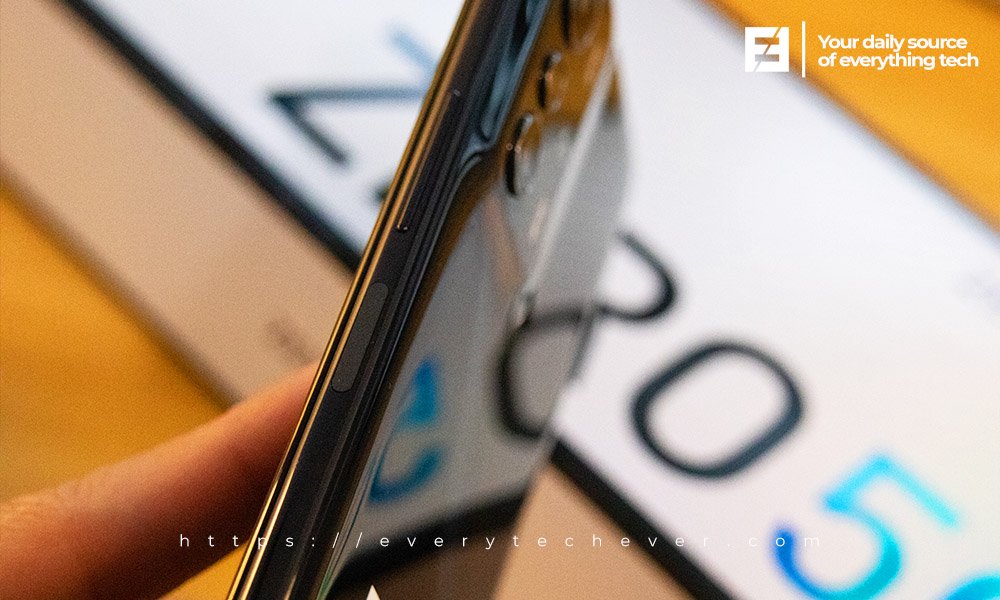
Should you buy the Infinix ZERO 5G?
Infinix has a new champion in its current lineup with the ZERO 5G, and it’s easy to recommend it because of its price tag that few others can match.
There are a few minor flaws, such as the lack of stereo speakers, the absence of an ultrawide camera, an uninspiring user interface, and the lack of Widevine L1 is quite frustrating. However, in terms of affordability, the Infinix ZERO 5G is a strong contender.
However, we still commend the Infinix ZERO 5G as it stands out for its overall performance, snappy response, and ability to handle massive apps. The stylish design and decent battery life contribute to the overall value.
If you are a frequent smartphone user, doing everything from social media to heavy multitasking, 5G connectivity, and mobile gaming — this is an obvious choice.
The Infinix ZERO 5G sells for only P11,990 on Infinix Flagship store on Shopee, Lazada, and retail partners nationwide.
Infinix ZERO 5G Full specifications:
- Display: 6.78-inch 2.5D curved LCD (IPS) screen w/ 120Hz refresh rate, 240Hz touch sampling rate, FHD+ 2460 x 1080 resolution at 396 ppi
- Dimensions: 168.73 x 76.53 x 8.77 mm
- Weight: 199
- CPU: 2.4GHz 6nm MediaTek Dimensity 900 octa-core processor
- GPU: Mali-G68 MC4
- RAM: 8GB LPDDR5
- ROM: 128GB UFS 3.1 expandable via microSD card slot up to 256GB
- Rear Camera: 48MP f/1.8 w/ PDAF, EIS + 13MP f/2.5 50mm Portrait + 2MP f/2.4 Bokeh + Dual color temperature flash
- Front Camera: 16MP f/2.0 + Dual Front FlashBattery: 5,000mAh w/ 33W TÜV Rheinland Safe Charge
- OS: Android 11 w/ XOS 10
- Connectivity: WiFi 6, 5G, 4G LTE, Bluetooth, FM Radio, GPS, dual SIM
- Sensors: Accelerometer, light, orientation, proximity, gyroscope, sound, magnetic
- Others: Side-mounted fingerprint sensor, face unlock, DTS audio, Linear Motor, Heat Pipe Thermal Module 2.0 + 3-D Cooling Master, USB-C
- Colors: Cosmic Black, Horizon Blue, Skylight Orange
- Price: PHP 11,990
Infinix ZERO 5G Review: An affordable gaming 5G smartphone
Summary
If you are a frequent smartphone user, doing everything from social media to heavy multitasking, 5G connectivity, and mobile gaming — The Infinix ZERO 5G is an obvious choice.



